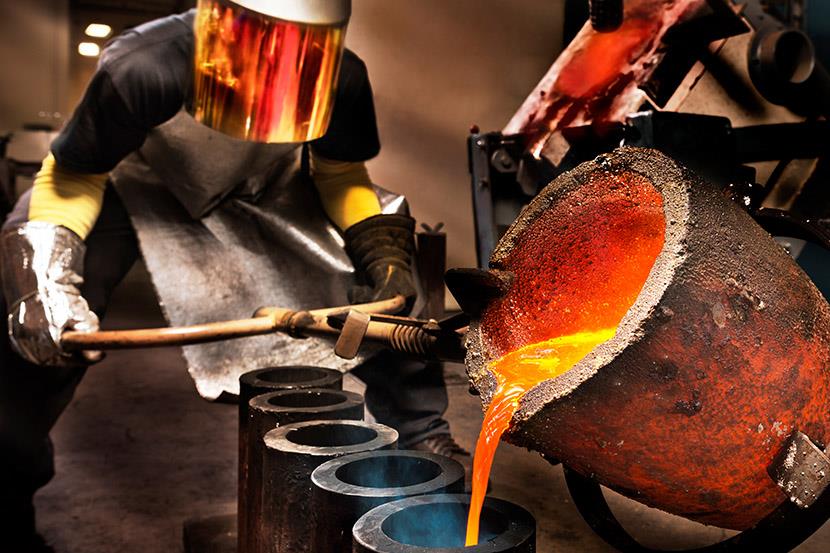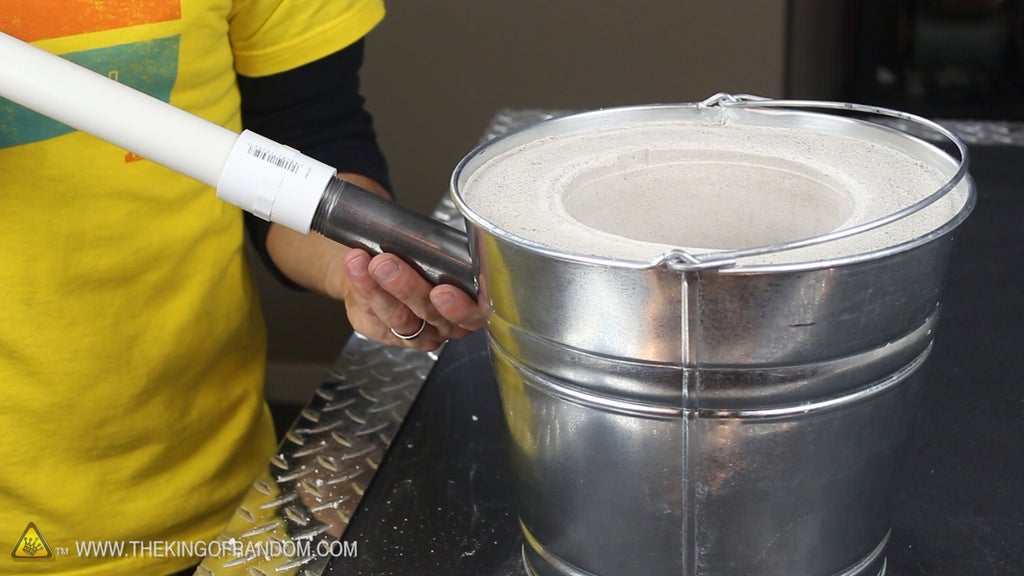Complete explanation of how an Aluminum Foundry creates and refines metal parts
Wiki Article
Revealing the Complexities of Layout and Manufacturing at a Metal Foundry
The layout and manufacturing processes at a metal foundry include a collection of elaborate steps. Each phase, from selecting basic materials to melting and casting, plays a critical duty in the last product. Metal Casting. Accuracy and quality assurance are vital in this sector. Yet, as technology advancements, brand-new developments are arising. These developments might redefine conventional practices. What ramifications do these modifications hold for the future of metal foundries?The Melting Process: Turning Raw Materials Into Fluid Metal
The melting process functions as the critical primary step in changing basic materials right into fluid steel, a treatment vital for foundry procedures. This stage begins with the mindful choice of steels, which might consist of iron, copper, or aluminum, relying on the desired final item. Each material is reviewed for pureness and structure to guarantee perfect melting conditions.
As the metals reach their melting factor, they transform from solid to liquid, enabling for further improvement. This process can also consist of the elimination of impurities through slag formation, ensuring the quality of the liquid steel. Ultimately, the effective completion of the melting process lays the foundation for subsequent metalworking operations.
Molding Techniques: Forming Metal With Accuracy
Following the melting procedure, the next stage in metal foundry procedures includes molding strategies that form the liquid steel into preferred forms. Different approaches are used, each selected based upon the particular requirements of the task. Sand spreading, one of the most common methods, utilizes a mix of sand and binder to produce mold and mildews that can be conveniently shaped and recycled. One more approach, financial investment casting, includes creating a wax pattern that is coated in a ceramic shell, permitting elaborate styles and high accuracy.Die casting, in comparison, makes use of high-pressure to infuse molten metal right into steel molds, leading to long lasting and consistent items. In addition, the selection of molding technique impacts the cooling price, surface area coating, and dimensional accuracy of the last product. Recognizing these strategies is crucial for optimizing layout and making certain the effective manufacturing of steel parts tailored to particular applications.
Casting Methods: From Model to Production
Many casting methods are employed in metal foundries to change from prototype growth to full-blown manufacturing. Amongst these methods, sand spreading sticks out for its versatility and cost-effectiveness, making it optimal for both small and huge manufacturing runs. Financial investment casting, understood for its accuracy, is often used for intricate geometries, permitting great information in the last item. Die spreading, appropriate for high-volume production, makes use of liquified metal injected into molds, supplying superb surface finish and dimensional precision.
Quality Assurance: Making Certain Quality in Every Pour
While the casting process can vary significantly in between techniques, preserving extensive quality assurance is vital to identify that every pour meets the needed criteria. Quality assurance in a metal foundry includes a collection of systematic checks and analyses created to determine problems early in the manufacturing process. This includes meticulous evaluations of basic materials, tracking of melting temperatures, and evaluations of mold honesty.Foundry personnel employ various screening strategies, such as non-destructive screening and dimensional confirmation, to identify that castings attain wanted specs. In addition, adherence to established industry requirements and accreditations boosts the dependability of the last product.
Feedback loops are likewise vital; any kind of disparities noted throughout high quality evaluations are assessed to fine-tune processes and alleviate future errors. Eventually, a society of high quality guarantee promotes not just customer fulfillment but also an online reputation for quality in the competitive landscape of metal production.
Technologies and Technologies: The Future of Metal Foundries
The landscape of steel foundries is rapidly evolving, driven by advancements in technology and innovative practices. Automation and robotics are transforming standard process, enhancing performance and precision throughout production. Automated pouring systems and robotic arms decrease human mistake, causing higher quality outcomes. Furthermore, the assimilation of expert system is allowing predictive maintenance, optimizing devices performance, and lessening downtime.Additive manufacturing is becoming a game-changer, enabling for quick prototyping and the development of complicated geometries that were previously unattainable. This modern technology assists in the personalization of steel parts, satisfying details client requirements without substantial time hold-ups.
Sustainability is additionally an essential emphasis, with factories embracing greener methods, such as recycling scrap metal and making use of energy-efficient heating systems. These technologies not only boost performance however likewise align with international efforts in the direction of ecologically accountable manufacturing, making sure the future of steel shops stays affordable and durable in a transforming commercial landscape.
Frequently Asked Inquiries
What Sorts of Metals Are Commonly Utilized in Factories?
Typical steels utilized in factories consist of light weight aluminum, cast iron, brass, bronze, and steel (Metal Casting). Each metal has distinct properties, making them appropriate for different applications in industries such as automobile, aerospace, and building and construction, among othersExactly How Do Foundries Manage Waste and Environmental Impact?
Factories manage waste and ecological effect by carrying out recycling programs, utilizing innovative filtering systems, and sticking to stringent governing criteria. They usually invest in sustainable innovations to decrease discharges and promote responsible resource usage throughout their operations.What Precaution Are in Place for Employees?
Foundries carry out different security procedures for employees, including personal protective equipment, correct ventilation systems, routine security training, emergency situation action protocols, and strict adherence to job-related wellness guidelines to decrease dangers related to harmful materials and devices.For how long Does the Entire Manufacturing Process Typically Take?
The entire production process typically takes numerous weeks, relying on the intricacy of the layout and the products used. Variables such as mold preparation, melting, and cooling time considerably affect the total duration of production.What Are the Key Tests Encountered by Metal Shops Today?
Metal factories today encounter obstacles such as climbing product costs, rising and fall demand, environmental laws, experienced labor scarcities, and maintaining quality control. These problems make complex production performance and productivity in an increasingly competitive market.The style and production procedures at a metal foundry involve a collection of elaborate actions. The melting procedure serves as the important very first action in transforming raw materials right into fluid steel, a treatment crucial for foundry procedures. Adhering to the melting procedure, the next stage in metal foundry operations involves molding techniques that shape the liquid steel into wanted forms. Many casting techniques are utilized in metal factories to move from prototype development to major manufacturing. Quality control in a metal foundry encompasses a collection of methodical checks and evaluations created to determine problems early in the manufacturing process.
Report this wiki page